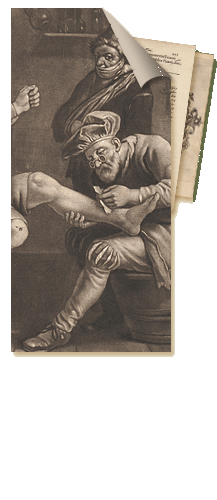PRINTING TECHNIQUES
A number of different print types are represented in the Osler Library Prints Collection, which spans several centuries. This section will outline the technical processes of printmaking for the most common types in our collection.
Intaglio
The intaglio (from the Italian word for incising/engraving) process is a printing method in which ink is carried in the recessed grooves of a plate. These grooves can be made using a variety of tools, creating a diversity of textures, which define the type of print created. The intaglio process contrasts with earlier relief printmaking methods (such as the woodcut, not featured in this collection), which printed ink from the raised surface of the plate. The lines of a print made in the intaglio process can vary in thickness and darkness, depending on the depth of the grooves that contain the ink. Earlier impressions of prints will be darker and stronger than later impressions, since the grooves become shallower as the plate wears down from repeated wiping and printing. Prints made in the intaglio process will bear a characteristic plate mark, a slight indentation made where the paper is pressed into the plate. Dating back to the fifteenth century, intaglio printing became increasingly popular in the sixteenth century, and was used as the principal method of book illustration.
 Engraving OPF000024 Engraving (OPF000024)
Engraving OPF000024 Engraving (OPF000024)
is an intaglio process that uses a tool called the burin to incise linear grooves into a printing plate (usually a flat copper plate). The burin has a sharply pointed V-shaped section that is used to cut lines out of the metal. The plate is then inked and wiped, so that the ink is pushed into the grooves, and the image is transferred to paper by applying pressure. The use of the burin creates an image made up of parallel lines, which can be curved and cross-hatched to achieve tonal effects. The term "engraving" has often been used inaccurately to refer to any printmaking process.
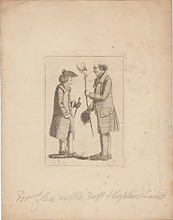 Etching OP000497 Etching (OP000497)
Etching OP000497 Etching (OP000497)
uses acid in place of the burin to create recessed lines in a copper plate. The plate is coated with wax, which protects the metal from acid, and the design is worked into the wax surface (typically through the use of a needle). The plate is then bathed in acid, which "bites" the metal where the wax has been scratched away. The longer the acid is allowed to bite, the deeper and darker the resulting lines will be. Etching allows for greater freedom of movement than engraving, which is restricted by the linear effects of the burin. This process can produce prints with a "spontaneous" effect more akin to drawing.
Many prints use a combination of etching and engraving methods to achieve linear effects (as opposed to the tonal effects of other intaglio methods like mezzotint, aquatint, and stipple). These prints are referred to as "line engravings", and were the standard form for book illustration from the mid-seventeenth through to the mid-nineteenth century. It was common for the background of an image to be etched and for the foreground figures to be skillfully worked up with engraving – thus, these prints have conventionally been known as engravings.
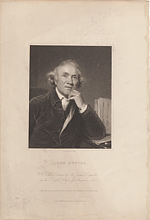 Stipple Engraving OP000611 Stipple engraving (OP000611)
Stipple Engraving OP000611 Stipple engraving (OP000611)
became a common method of printmaking from the mid-eighteenth century on, and was especially popular in portraiture. This process engraves short flicks or dots to create a tonal rather than linear image. The pattern of dots can be engraved with a tool called the “mattoir”, and finer details (such as the modeling of a face) can be dotted with an etching needle.
 Mezzotint OPF000330 Mezzotint (OPF000330)
Mezzotint OPF000330 Mezzotint (OPF000330)
is another tonal intaglio process, which can achieve soft gradations ideally suited to portraiture. The surface of the plate is roughened with a tool called a rocker, which is rolled over the plate to create a fine sandpaper texture. The plate is covered in ink, and sections are smoothed away to varying degrees. Mezzotints, invented in the late seventeenth century, are easily identifiable by their distinct velvety appearance.
If colouring was applied to a print, engravings and etchings were typically coloured by hand using watercolour (OPF000431 – hand-coloured etching). Tonal intaglio processes like stipple and mezzotint (as well as aquatint) could be hand-coloured or printed using colour inks (OP000154 – colour stipple engraving). The difference between hand-colouring and printed colour is discernable when examining the texture of the colour – whether it is applied in a wash, or in a uniform pattern of lines or dots.
 hand coloured etching
hand coloured etchingOPF000431
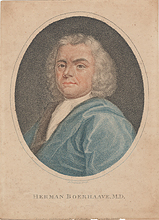 colour stipple engraving
colour stipple engravingOP000154
Planographic
Planographic printing creates an image from a flat surface, as opposed to an incised or raised surface. The principal planographic process is lithography, which became immensely popular in commercial printing from about 1820 on. Lithographs were printed on stone, where the smooth, greased surface was chemically treated to accept ink only in certain places. These versatile prints were coloured by hand (OPF000991), tinted, or printed in colour using multiple stones. Colour lithographs are often called "chromolithographs", particularly in reference to the reproductive colour prints produced commercially in the latter half of the nineteenth century (OPF000676).
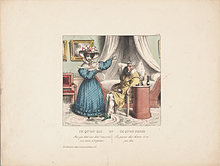 Hand Tinted Planographic
Hand Tinted PlanographicOPF000991
 Colour Lithograph
Colour LithographOPF000676
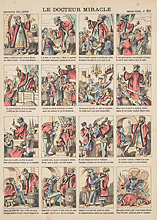 Wood Engraving
Wood Engraving
OPF000998 Relief
Cartoons were typically printed as colour lithographs, or as hand-coloured wood engravings (OPF000998). Wood engraving is distinct from the intaglio process of engraving on metal. It is a relief method, meaning the ink lies on the raised section of the plate, the unwanted areas having been cut away. Wood engraving contrasts with the woodcut, an older type of relief print – the design is cut on the end grain of the wood block, rather than the side grain, which is more susceptible to splintering. This method also employs the burin, which could achieve finer lines than the knives used in woodcuts. The result is an image that is printed "white-on-black". This process was popular for illustration and cartoons in the late nineteenth and early twentieth centuries. Images could be coloured with watercolour, or printed from colour on end-grain woodblocks; the latter method was commonly used ca. 1850-1900 for reproductive purposes, and these prints have often been referred to as "chromoxylographs".
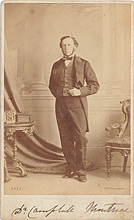 Photograph
Photograph
OP000224 Photographs
The Osler Library Prints Collection also includes a number of photographs, a significant portion of which are of the "carte-de-visite" type (OP000244). This is a small albumen print, measuring approximately 11.4 x 6.4 cm, individually mounted on a calling card. Conceived for portraiture, the carte-de-visite was patented in Paris by A.A.E. Disdéri (1819-1899) in 1854, and became extremely popular in the late nineteenth century. They were exchanged, collected in albums, left as calling cards, and sent through the mail as keepsakes and collectibles. Our collection contains numerous examples from the studios of prominent Montreal-based photographers William Notman and James Inglis.
Information Sources
Anatomia: Anatomical Plates from the Thomas Fisher Rare Book Library. (University of Toronto Library: 2003).
http://link.library.utoronto.ca/anatomia/application/index.cfm.
The Art and Architecture Thesaurus. The Getty Research Institute. (J. Paul Getty Trust: 2011).
http://www.getty.edu/research/tools/vocabularies/aat/index.html.
Gascoigne, Bamber. How to Identify Prints: A Complete Guide to Manual and Mechanical Processes from Woodcut to Inkjet. 2nd ed. (New York: Thames & Hudson, 2004).
Glossary of Printmaking Terms. (Spencer Museum of Art, University of Kansas: 2011).
http://www.spencerart.ku.edu/collection/print/glossary.shtml
What is a Print? (Museum of Modern Art).
http://www.moma.org/whatisaprint/


